Fender '63 Reverb PR263 Handleiding
Fender
Gitaarversterker
'63 Reverb PR263
Bekijk gratis de handleiding van Fender '63 Reverb PR263 (4 pagina’s), behorend tot de categorie Gitaarversterker. Deze gids werd als nuttig beoordeeld door 105 mensen en kreeg gemiddeld 4.6 sterren uit 53 reviews. Heb je een vraag over Fender '63 Reverb PR263 of wil je andere gebruikers van dit product iets vragen? Stel een vraag
Pagina 1/4

T H E S O U N T H A T C R E A T E S L E G E N D SD
P/N 047980
Owner,s Manual
‘63 Fender Reverb
TYPE: PR 263

Back in the days when blonde Showmans and
white Jaguars dominated the nation’s bandstands
(and garages), there also existed a mysterious little
box called the Fender Reverb. This was before the
reverb we know and love today was “built-in” to
Fender amplifiers. This inconspicuous device was
responsible for the socking wet surf sound of the
early 1960’s. Nobody really knew exactly how it
worked, but if you stuck it between your guitar and
amp, turned all the knobs up about half way, you’d
soon be hanging ten on a pipeline tidal wave.
Of all the effects devices produced over the past
40 years, the Fender Reverb has truly established
itself as the “industry Standard” for the
self-contained, tube driven spring reverb. The
Fender Reverb has been used on thousands of
recordings and countless live performances since
the early 1960’s, when the first version appeared
on the music scene. Over the years, the Fender
Reverb has proven to be incredibly versatile, being
used for guitar, keyboards, vocals, accordion,
electric violin, and an amazing array of other
electrified instruments. Whatever the application,
the Fender Reverb has always been able to
produce “the right sound”.
Your new ‘63 FENDER REVERB is a faithful
reproduction of an original 7963 Fender Reverb
(model 6G15 for historical or technical types).
Every effort has been made to keep the circuit
exactly like the original. For improved reliability and
manufacturing efficiency, a printed circuit board for
the components is used in place of the original
“Leo board” style phenolic parts panel used in the
older Fender amplifiers for many years. The power
and reverb transformers used in the ‘63 FENDER
REVERB are built to the original specifications that
are still in the Fender R&D department files. Due to
the lack of availability, the original 6K6 power tube
has been replaced with a modern 6V6. Some
components used in this reissue product are
different in size and shape from the earlier version,
but the component values are identical.
If you compare a new ‘63 FENDER REVERB with an
original model, the two units may sound slightly
different. Remember the reverb pan and filter
capacitors in the original are probably over 30 years
old and their performance has changed over the
years.
The built in quality of a Fender electronic product
is the result of over four decades of dedication in
the combined research and development skills of
our engineers and musicians.
That is why we proudly say... FENDER, The
Sound That Creates Legends.
WARNING: No user serviceable parts inside.
Refer servicing to qualified personnel only.
Introduction

NOTE: BEFORE ATTEMPTING TO OPERATE YOUR
‘63 FENDER REVERB, turn the unit around and look
inside the back. You will see a metal lever near the back and
slightly left of center. This lever, when in the shipping or
traveling position, is pushed toward the front of the cabinet
and then to the right to lock. This lever pushes the inside of
the pan against a soft foam pad and prevents the springs in
the pan from being damaged due to excessive movement. To
release the lever to the playing position, push the lever
slightly forward and then to the left to unlock it. Let the lever
come back as for as it can to release the pan.
‘63 Fender Reverb top panel functions
A. POWER SWITCH-Turns the AC power ON and OFF.
When the switch is in the OFF position, the unit is
completely shut down.
B. FUSE-The fuse is in the AC supply of the amplifier and
will help to protect the amplifier and the operator in the
event of an electrical fault. If a fuse blows, it should only
be replaced with a fuse in accordance with the listing at
the fuse holder. If an amplifier repeatedly blows fuses, it
should be checked out by a qualified technician. UNDER
NO CIRCUMSTANCES should a fuse of a different type,
higher current rating, or a fuse bypass be used, as this
could damage the equipment and present a serious safety
hazard.
C. PILOT LIGHT-This lamp is illuminated when the
power is on.
D. DWELL-Adjusts the amount of signal sent to the reverb
pan. At low Dwell settings (two to four) the reverb sounds
much like a guitar played into a large room. At high
Dwell settings (above four) the reverb signal will start to
sound more “springy” or ‘twangy”.
E. INPUT-A high impedance plug-in connection for
instruments.
F. MIXER-The reverb “wet” signal and the ‘dry” signal are
mixed together at this control. The mixer adjusts what
percentage of the signal sent to the output jack is from the
reverb pan circuit compared to the dry signal. Higher
settings equal more reverb.
G. TONE-This control affects only the “wet’ portion of the
signal and acts much like the treble control on a guitar
amplifier. Turning the Tone control up allows more high
frequencies through from the reverb to the mixer control.
H. OUTPUT-This is the output jack that is used to send the
signal from the reverb unit to the amplifier.
Using your ‘63 Fender Reverb
The ‘63 Fender Reverb is designed to go between a low level
instrument (such as a guitar) and a high input impedance
amplifier (such as any Fender tube amplifier or the high
sensitivity input on any Fender solid-state amplifier). It
should be used only with the clean channel of the
amplifier as distorted reverb sounds very unnatural. If
you want to use the ‘63 Fender Reverb with high gain or
distortion, you may use either a distortion pedal inserted
before the Reverb Unit or connect the Reverb Unit in the
effects loop of the amplifier and use the high
gain/distortion channel of the amplifier. However, since
most of the sonic benefits of the ‘63 Fender Reverb result
from the fact that the reverb signal is generated before
the tone controls and preamp gain circuitry of the
amplifier, we do not recommend using it in the effects
loop.
Product specificaties
| Merk: | Fender |
| Categorie: | Gitaarversterker |
| Model: | '63 Reverb PR263 |
Heb je hulp nodig?
Als je hulp nodig hebt met Fender '63 Reverb PR263 stel dan hieronder een vraag en andere gebruikers zullen je antwoorden
Handleiding Gitaarversterker Fender
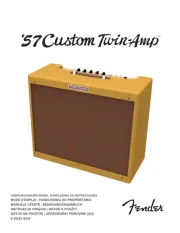
14 Mei 2025
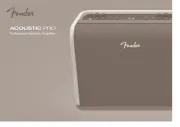
14 Mei 2025

26 Maart 2025
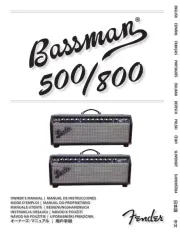
15 November 2024

15 November 2024

2 Oktober 2024

2 Oktober 2024

2 Oktober 2024

2 Oktober 2024

2 Oktober 2024
Handleiding Gitaarversterker
- Hotone
- Line 6
- Radial Engineering
- Ashdown Engineering
- Valeton
- Suhr
- Vox
- Hughes & Kettner
- EVH
- SPL
- Harley Benton
- ART
- AMT
- Roland
- Rivera
Nieuwste handleidingen voor Gitaarversterker
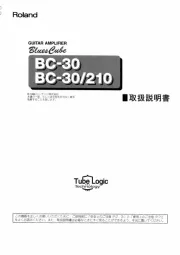
4 September 2025

14 Augustus 2025
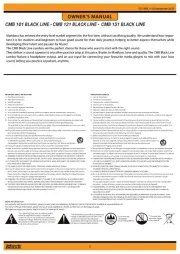
5 Augustus 2025
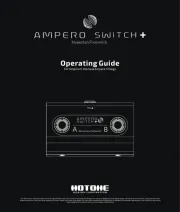
4 Augustus 2025

4 Augustus 2025

31 Juli 2025
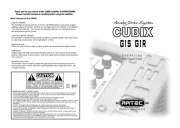
29 Juli 2025
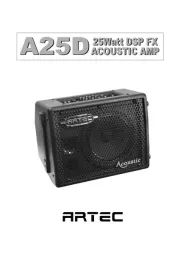
28 Juli 2025

18 Juli 2025
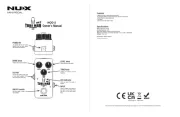
17 Juli 2025